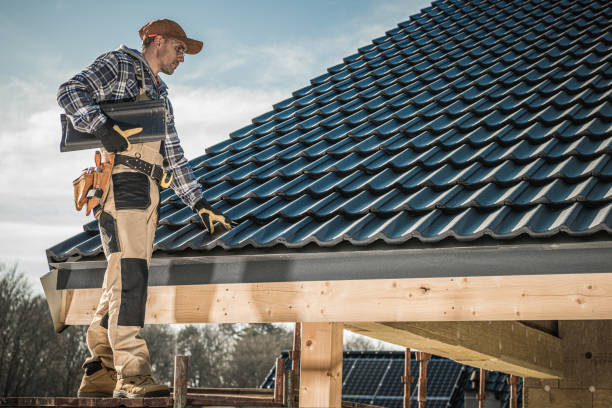Your roof is vital for protecting your home, maintaining energy efficiency, and ensuring stability. However, roofs wear out over time and may stop working effectively. Whether due to age, damage, or visible wear, recognizing when to replace your roof is key to avoiding costly repairs. For homeowners, watching for signs of roof failure is especially important in areas with unpredictable weather. Replacing your roof on time protects your home, enhances its value, and ensures safety for years to come.
Visible Damage and Aging Materials
Visible damage is a clear sign it’s time to replace your roof. Cracked, curled, or missing shingles can expose your home to leaks and weather damage. Shingle granules in your gutters are another sign of wear. Most roofs last 20–30 years, depending on materials and installation. If your roof is near the end of its lifespan, it’s smart to consider a replacement, even if it looks fine. Some damage isn’t visible from the ground, so a professional inspection can help uncover hidden issues.
Leaks and Water Damage
Leaks are a clear sign your roof may need replacement. Even small leaks can cause serious damage to insulation, drywall, and electrical systems. With regular exposure to rain and snow, a minor leak can quickly worsen. Signs of water intrusion include ceiling stains, musty odors, or soft spots in the attic. While temporary fixes offer brief relief, a full roof replacement is often the best long-term solution to prevent water damage and protect your home’s structure.
Sagging or Uneven Roof Lines
A sagging roof is a serious issue that should not be ignored. It often points to problems like trapped moisture, weakened decking, or damaged support beams—reducing the roof’s strength. This is especially risky in areas with heavy snow or storms, which add extra stress. Notice dips or uneven slopes in your roofline? These signs may mean you need a full roof replacement in Tooele to restore its integrity and prevent collapse. Act now to keep your home safe and stable.
Increasing Energy Bills
Noticed a sudden rise in heating or cooling costs without a clear reason? Your roof could be the culprit. As roofing materials wear out, they lose insulation efficiency. Poor ventilation, missing shingles, or failing underlayment can let air escape, forcing your HVAC to work harder. Installing a new roof improves insulation and ventilation, helping maintain a stable temperature year-round. This reduces energy bills and boosts indoor comfort, whether it’s summer heat or winter chill. For homeowners, the improved efficiency makes a lasting difference.
Mold, Algae, or Moss Growth
Mold and moss on your roof can trap moisture and speed up deterioration. While some growth can be cleaned, it often signals issues like poor drainage or excess moisture. Over time, this can lead to roof rot and serious damage. If you see widespread growth or mold, it might be time to consider a roof replacement to protect your home.
Prior Storm or Hail Damage
Severe storms and hail can damage your roof, even if it looks fine. Hail and debris can weaken materials, creating hidden vulnerabilities that worsen over time. This can lead to leaks, structural damage, and costly repairs. With extreme weather like high winds and heavy snow, it’s important to inspect your roof after major storms. Catching damage early can prevent bigger problems, and if repairs are significant, replacing the roof might be a safer, more cost-effective solution.
Planning to Sell Your Home
Replacing a worn-out roof before selling your home can be a smart investment. A new roof boosts curb appeal and gives buyers confidence, often leading to a higher sale price. It shows the property is well-maintained and move-in ready, a big advantage in a competitive market. Real estate listings often highlight new roofs as a key selling point, attracting more interest. Homes with updated roofs typically get faster offers and better bids, making it a worthwhile upgrade.
Conclusion
Replacing your roof at the right time can prevent costly repairs, improve energy efficiency, and boost your home’s value. Watch for warning signs like aging shingles, water stains, sagging areas, or high energy bills. Addressing these issues early protects your home and offers peace of mind. If you’ve noticed these red flags, it may be time for a replacement. A new roof ensures long-term protection, safety, and comfort for your family.
If you’re noticing signs of wear and tear on your roof, such as missing shingles or leaks, it might be time to consider a replacement. Regular inspections can help identify issues early, but sometimes a full replacement is the best solution to ensure the safety and integrity of your home. For those in need of professional guidance, https://premierroofersnh.com/ offers expert advice and services to help you make informed decisions about your roofing needs. By addressing potential problems promptly, you can prevent more extensive damage and maintain the value of your property. Remember, a well-maintained roof is crucial for protecting your home from the elements.



